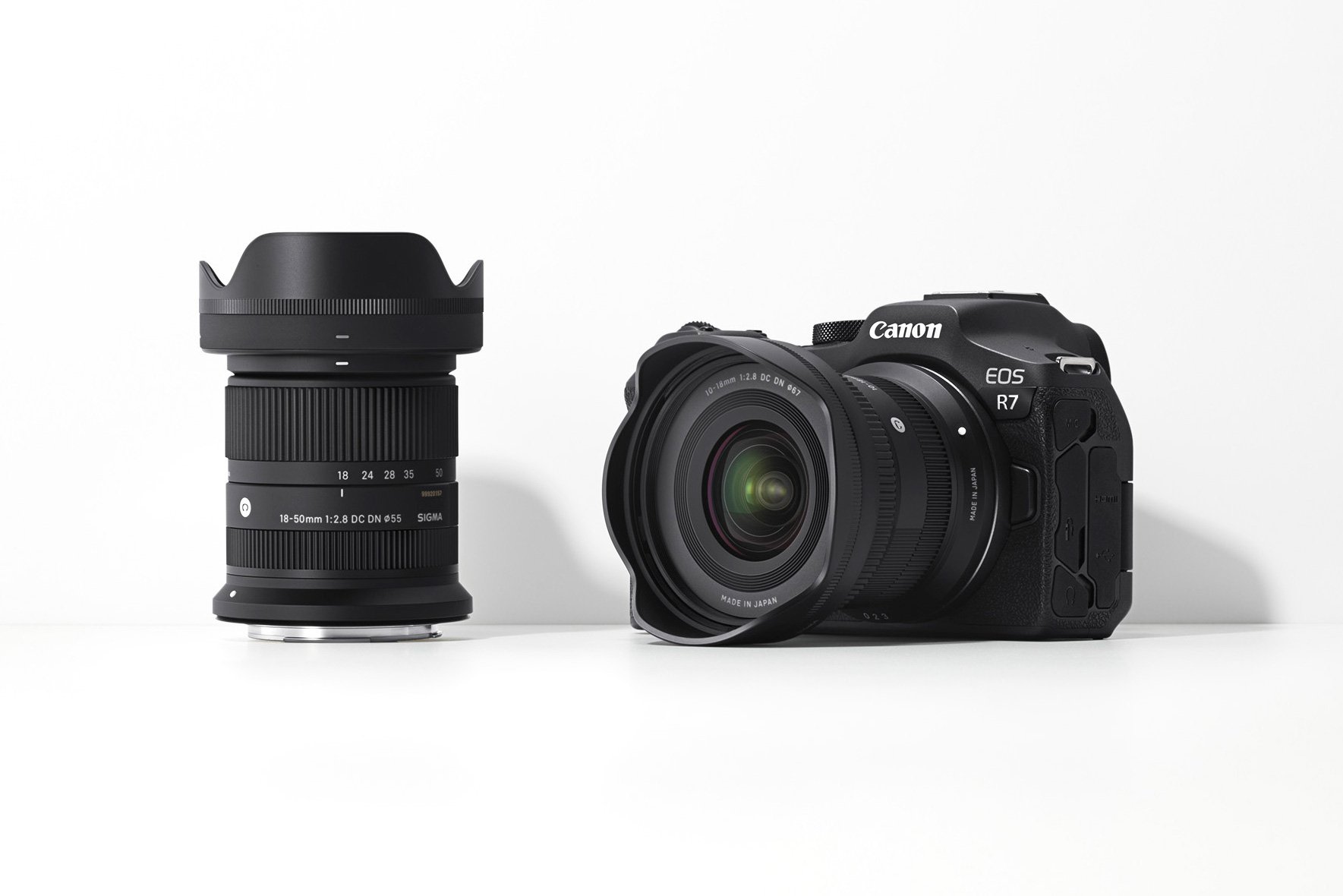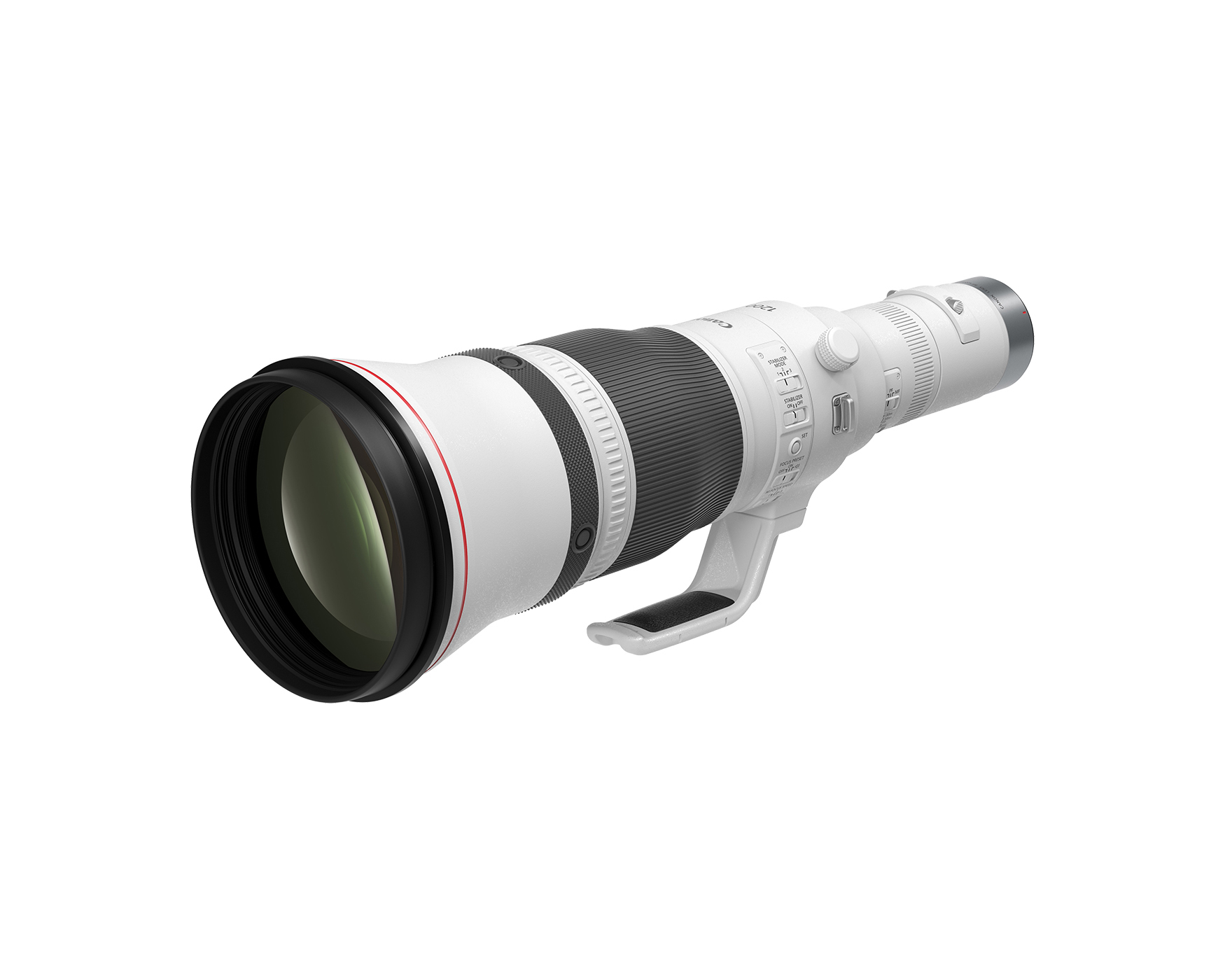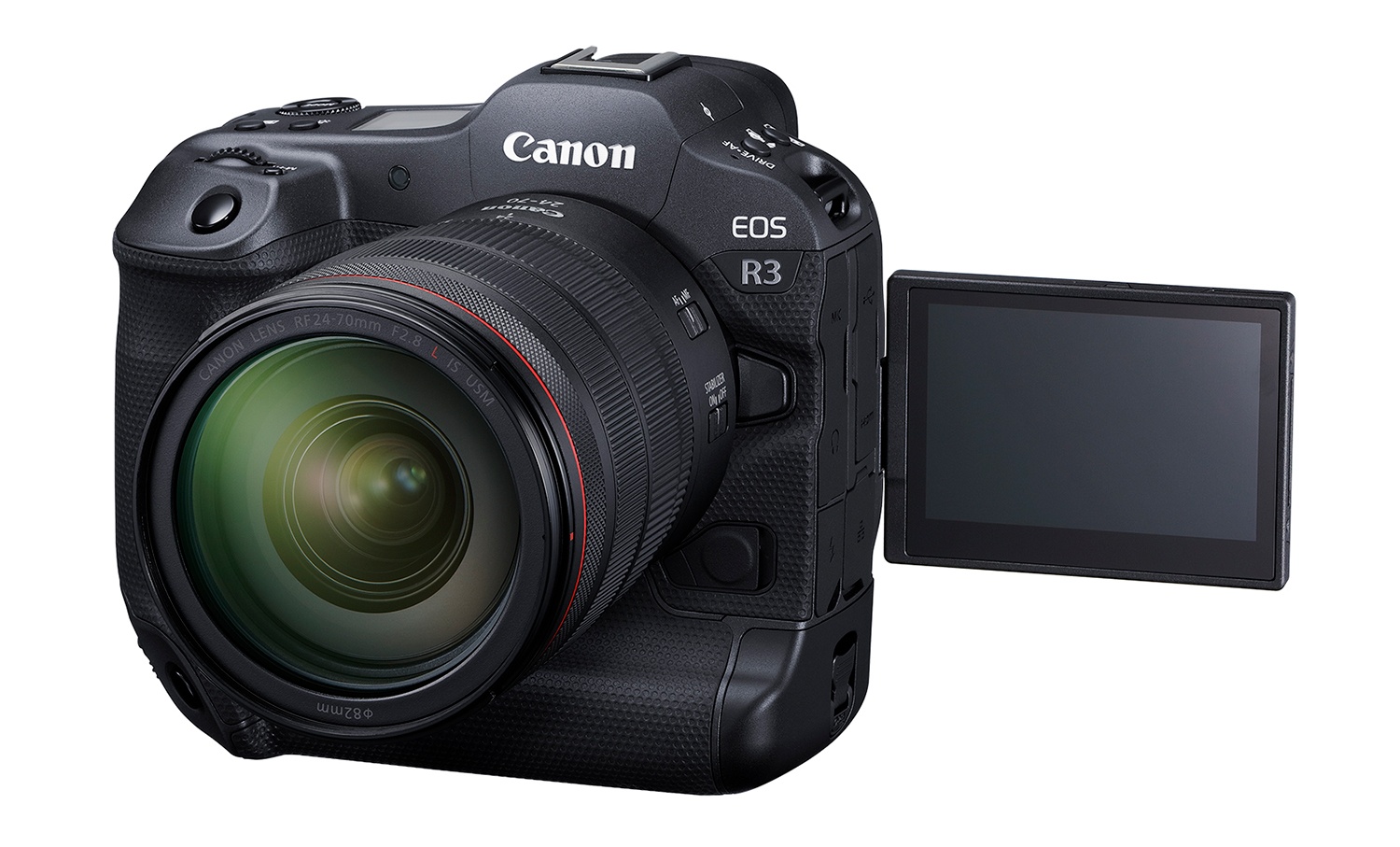I guess many of us were waiting for this: the possibility to use Sigma's excellent…
Canon announces 1D C, C500 and new EF Cinema Lenses

There has been a batch of announcements by Canon in the last hours.
The EOS-1D C (‘C’ for Cinema). Looks like the 1D X, but different specs:
- Video recording at 4K (4096 x 2160-pixel) or Full HD (1920 x 1080-pixel) resolution. 4K video is captured at an APS-H size (1.3x crop factor)
- 18.1-megapixel full-frame 24mm x 36mm Canon CMOS sensor
- Records 8-bit 4:2:2 Motion JPEG 4K video at 24 frames-per-second (fps) or Full HD 1920 x 1080 video at frame rates from 24p to 60p
- Canon Log Gamma to enable the recording of high-quality video with rich gradation expression
- Captured video can be output to an external recorder using an uncompressed YCbCr 8-bit 4:2:2 signal
- Super 35mm sized crop recording
- ISO 100-51200
- Dual DIGIC 5+ processors
- 12fps in still mode and 14fps with the mirror up
- Available within 2012 at a suggested retail price of $15,000.
From the press release
The Canon EOS-1D C digital SLR camera incorporates Canon Log Gamma to enable the recording of high-quality video with rich gradation expression, making possible the type of impressive image quality required in motion pictures by maximizing both highlight and shadow detail retention while also providing a high level of color-grading freedom. The EOS-1D C’s full-frame 24 x 36mm 18.1-megapixel Canon CMOS sensor makes possible a wide range of creative imaging expression, such as image-blur effects. Additional features include an expanded sensitivity range of up to ISO 25600 for exceptional motion-imaging results with reduced noise even in low-light settings. The camera’s ability to record 8-bit 4:2:2 4K and 8-bit 4:2:0 Full HD video to CF cards eliminates the need for an external recorder and enables workflows with increased mobility. If desired, however, captured video (excluding 4K video) can be output from the camera’s HDMI terminal to an external recorder using an uncompressed YCbCr 8-bit 4:2:2 signal.
4K video is captured by an approximately APS-H-sized portion of the full image sensor, while Full HD video can be captured in the user’s choice of two different imaging formats:
- 1. The standard Full HD setting captures the full 36mm width of the CMOS sensor to achieve the largest possible angle of view for any compatible lens.
- 2. An optional Super 35 crop setting enables cinematographers to match the industry-standard imaging format and angle of view achieved by traditional motion picture cameras. This enables video footage from the EOS-1D C camera to more closely match the look of footage from other cameras in multi-camera shooting environments.
Canon’s EOS-1D X Press Release can be read clicking here.
The C500…
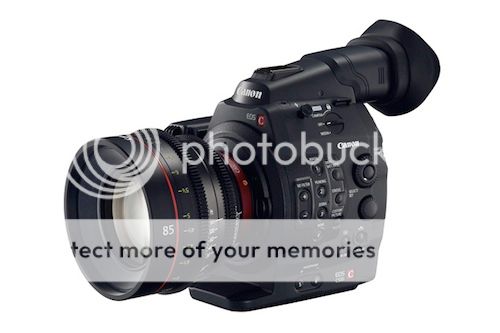
- 8.85-megapixel CMOS sensor
- PL mount and EF mount models
- 4K (4096 x 2160-pixel) resolution
- 10-bit uncompressed RAW
- Quad full-HD (3840 x 2160), 2K (2048 x 1080), full HD (1920 x 1080), and more options.
- 4K formats can operate from one to 60 fps
- 12-bit RGB 4:4:4 signal format during 2K output (1 to 60 fps)
- 10-bit YCrCb 4:2:2 mode up to 120 fps
From the press release:
The 4K imaging format is emerging as the new standard for advanced effects and post-production in Hollywood, and it is particularly important for big-budget motion pictures that include scenes compositing live-action cinematography with high-resolution computer-generated imagery. The Cinema EOS C500/C500 PL digital cinematography cameras will not only support 4K-resolution video but also outputs this as a 10-bit uncompressed RAW data stream with no de-Bayering. The cameras offer the additional versatility of being able to output quad full-HD (3840 x 2160), 2K (2048 x 1080), full HD (1920 x 1080), and other imaging options. All of these digital image source formats fully conform to established SMPTE production standards. All 4K formats can be selected to operate from one to 60 frames per second. The cameras employ a 12-bit RGB 4:4:4 signal format during 2K output, which can be selected to operate from one to 60 frames-per-second (fps) as well. If switched to a 10-bit YCrCb 4:2:2 mode, the camera can operate up to 120 fps.
The Cinema EOS C500 simultaneously records in-camera a 50 Mbps HD proxy video to a CF card that is immediately available to support offline editing. Equipped with a newly developed Super 35mm-equivalent approximately 8.85-megapixel CMOS sensor, the cameras will be compatible with Canon’s wide range of interchangeable EF Cinema and PL-mount lenses and EF lenses for Canon SLR cameras. Highly mobile and compact for filmmaking versatility, the Cinema EOS C500/C500 PL digital cinematography cameras – like Canon’s Cinema EOS C300/C300 PL cinematography cameras – provide all of the same ergonomic features, except for the rotating hand grip.
There is no information about the price for the time being. Update: price should be around $30,000 [via thephoblographer]. Canon’s C500 Press Release can be read clicking here.
Next, the lenses…
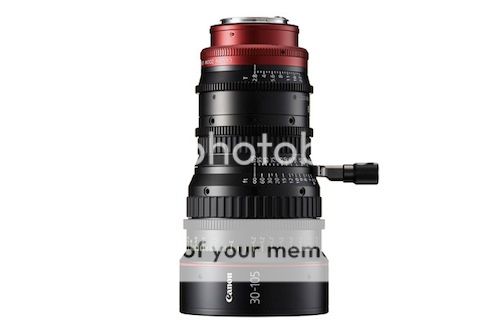
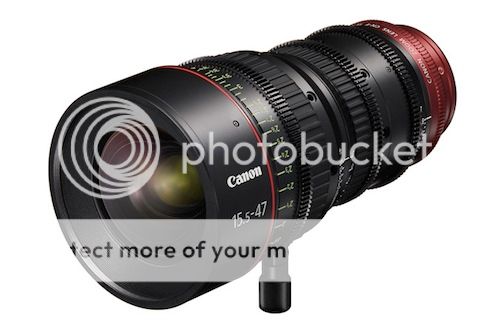
Both lenses will be available with EF or PL mount. From the press release:
Designed to deliver exceptional optical performance on 4K resolution Super 35mm-equivalent cameras, each of the four lenses features a compact, lightweight design to facilitate handheld and SteadicamTM shooting while also covering a wide range of focal lengths. Included are two wide-angle cinema zooms – the CN-E15.5-47mm T2.8 L S* (for EF mounts) and the CN-E15.5-47mm T2.8 L SP* (for PL mounts) – and two telephoto cinema zooms – the CN-E30-105mm T2.8 L S* (for EF mounts) and CN-E30-105mm T2.8 L SP* (for PL mounts)
These wide-angle and telephoto cinema zooms will be compatible with industry-standard Super 35 mm-equivalent cameras and are engineered to deliver exceptional optical performance to support 4K resolution digital filmmaking. The four lenses will perfectly complement the compact body design of Canon EOS digital cinematography cameras with their own compact, lightweight design featuring a form factor well-suited for hand-held use, or for mounting on Steadicam or other lightweight, highly mobile camera-support devices used for cinema verité, “run-and-gun” shooting, or other rapid-action filmmaking.
Read the press release clicking here.
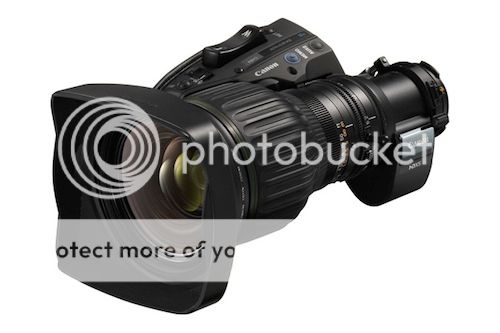
From the press release:
Weighing in at less than 4.5 lbs., the HJ17ex6.2B provides videographers with a wide range of expressive possibilities that can help to minimize production costs by reducing the need for multiple lenses. At a 6.2mm focal length, the lens provides an impressive 75.5 degree horizontal viewing angle. Combined with the short 0.4 meter M.O.D. (reduced to 10mm with Macro), the extra-wide angle of the HJ17ex6.2B enables it to be used for vivid shooting even when ultra-close to the subject, such as in small rooms where adequate distance from the subject cannot be attained. The 17X magnification and built-in 2X extender of the HJ17ex6.2B, meanwhile, provide superb telephoto performance, which is so often needed in news and documentary applications. Although capable of focal lengths ranging from wide-end to tele-end, and subject distances ranging from infinite to extreme close-up, the HJ17ex6.2B minimizes optical aberration across the entire screen and exhibits superb optical performance throughout the field.
As with all of the lenses in Canon’s HDxs Series product line, the HJ17EX6.2B makes optimum use of original Canon optical elements, Hi-UD (Hi Index Ultra Low Dispersion) glass, large-diameter high-precision aspherical lenses, and other components maximized by Canon’s original “Power Optical System” design technology. Canon HDxs Series lenses also suppress ghosting and flaring as a result of ray-simulation technology employed in the design process, in conjunction with original Canon spectral coatings. This combination of advanced Canon optical technologies also minimizes curvature of field, chromatic aberration, chromatic aberration of magnification, and axial chromatic aberration throughout the entire field regardless of focal length or subject distance, stably enabling peak optical performance.
The new HJ17ex6.2B also features Canon Enhanced Digital eDrive technology, which utilizes Canon ultra-high-precision, microprocessor-driven digital servos with 16-bit optical encoders. Canon eDrive technology enables users to easily program focus, iris, and zoom position and speed settings for precise, automated repeatability via an easy-to-use LCD menu, assignable “soft” function buttons, and a rocker switch built into the lens grip. Users can program multiple settings or none at all, depending on their personal preference.
Read the press release clicking here.

